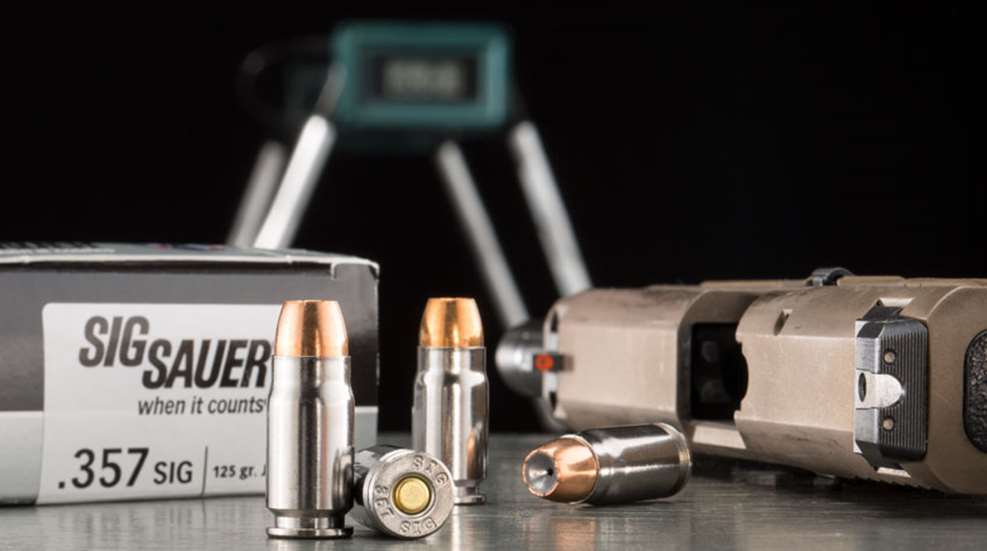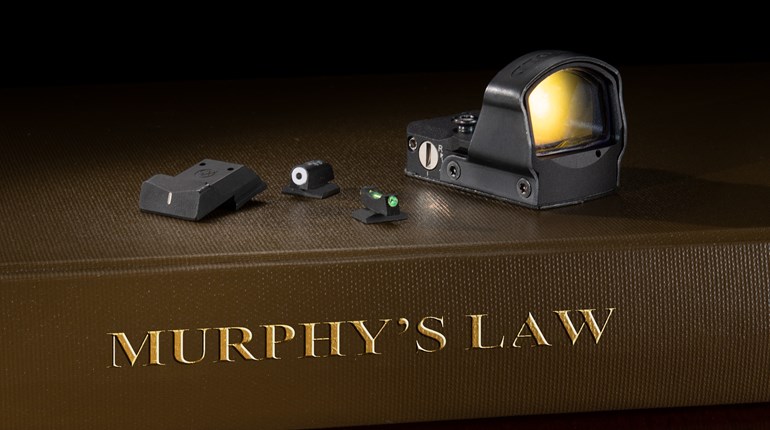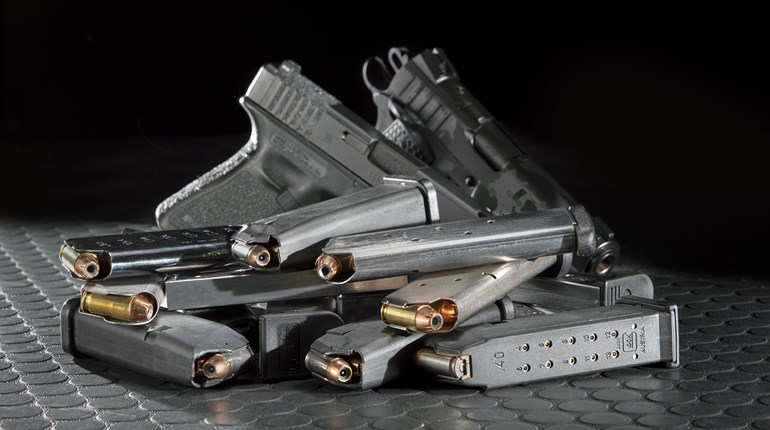
The introduction of smokeless powder triggered a massive velocity boost in rifle cartridges that quickly spilled over into handgun rounds.
During the blackpowder-cartridge era, the .45 Colt was practically the magnum of its day, with velocities sometimes topping the 1,000 fps mark out of a suitably long-barreled Peacemaker revolver, but most handgun rounds of that period were a good 200 to 300 fps slower.
Meanwhile, blackpowder-cartridge-rifle rounds had muzzle velocities we normally associate with lower-end, magnum-revolver cartridges these days. When smokeless powder debuted, the increased speeds on tap made jacketed bullets suddenly a necessity, because pure-lead ones just left gray streaks down the bore at those increased velocities.
Military-rifle cartridges soon sported smaller-diameter, copper-jacketed bullets moving at vastly higher velocities, and it didn’t take long for handguns to follow in their wake.
John Moses Browning’s .32 and .38 ACP cartridges, both ultra-modern at the time of their introduction at the close of the 19th century, were screamers in the terms of their day. The .32 ACP’s velocity was roughly half again that of the similarly size .32 S&W revolver cartridge, and the .38 ACP was reported in some periodicals of the era as exceeding 1,100 fps with the right loads.
Several early semi-automatic-pistol cartridges—like the 7.65 Borchardt and its .30-caliber Luger and Mauser offspring—looked for all the world like tinier versions of the latest bottlenecked rifle cartridges.
In fact, they were apparently viewed as miniature rifle cartridges, too, judging by how many of the pistols chambered for them were equipped with detachable shoulder stocks and tangent sights gradated out to wildly optimistic ranges. (For example, a 1,000-meter hit on a sub-barn-size target with a C96 “Broomhandle” Mauser would be quite a feat of marksmanship, even with a shoulder stock.)
This initial quest for “velocity über alles” in handgun cartridges was temporarily stymied at the dawn of the 20th century by two independent developments.
First, the German military decided to adopt the Luger pistol, already in use by the Swiss, provided that the bottle-necked .30 Luger cartridge walls were blown out almost straight to take a .355-inch bullet, creating the now-ubiquitous 9 mm.
The second was the U.S. Military’s Thompson-LaGarde tests, which were a sort of mad scientist’s affair of shooting dangling corpses to measure how much they moved from imparted momentum, combined with shooting up various animals in the Chicago stockyards and timing how long they took to die. The past was indeed a different country. The test was arguably designed to “prove” that .45 inch was the correct diameter for a handgun bullet, given the military’s desire at the time to replace the .38 Long Colt cartridge.
In the interwar period, velocity was back on the front burner, however, at least here in America. It was the era of the prohibition gangster and the bank robber with his getaway car.
In order to deal with automobile bodies and primitive bullet-resistant vests, high-velocity projectiles were required, and existing cartridges got major speed boosts. The already fast-ish .38 ACP was given a serious bump in pressure to take advantage of the greater strength and safety margins of the Colt 1911 versus the earlier 1900 and 1902. The resultant cartridge, which picked up as much as 200 fps over its parent, was relabeled the “.38 Superautomatic” to prevent it from being confused with the original cartridge and wrongly loaded into those older guns.
Similarly, the .38 Spl., designed at the close of the blackpowder era, got successive speed boosts as first the .38 Spl. Hi-Speed, and finally the .357 Mag. The latter cartridge, lengthened slightly to prevent it from being chambered in guns designed for the lesser .38 Spl., drew an amazing amount of attention in the press of the time, as well it should have. The original factory loads for the first magnum sent a 158-grain bullet downrange at a claimed 1,400 fps, which is as fast as the bottlenecked .30-caliber rounds would launch their lighter, 100-grain bullets at the time.
In the post-World War II era, velocity was occasionally sought as a panacea for poor terminal bullet performance. The “+P” SAAMI specification for the .38 Spl. cartridge was an attempt to eke better ballistics from the round without the practical and political downsides of the .357 Mag., such as heavy recoil and excessive media publicity—problems that subsequently attended the .44 Mag. during the “Dirty Harry” movie era.
Not long after, Lee Jurras launched the Super-Vel company, which squeezed maximum velocity out of conventional chamberings like 9 mm and .38 Spl. by using light-for-caliber jacketed hollowpoints (JHP) and +P chamber pressures. This path was soon followed by other boutique makers such as Cor-Bon, and eventually the major manufacturers, too.
When a light-for-caliber JHP—a 9 mm Winchester 115-grain Silvertip—infamously failed to penetrate deeply enough in the FBI’s 1986 Miami shootout, velocity fell out of favor as manufacturers raced to provide deeper-penetrating projectiles. By the early 1990s, “subsonic” was actually a common advertising buzzword for some premium brands of defensive-handgun ammunition.
Probably the last (or at least most recent) hurrah for maximum velocity in combat pistol cartridges was SIG Sauer’s introduction of the bottlenecked .357 SIG round in the mid-1990s. Hearkening back to the bottlenecked cartridges of yore, this cartridge was basically a .40 S&W case necked down to accept a .355-inch bullet. The “.357” of the name was ad hype meant to recall fond memories of the classic and lauded 125-grain .357 Mag. JHP revolver rounds, whose performance the new cartridge hopefully intended to replicate.
Initially successful with a couple of federal agencies as well as numerous state police organizations, the round was touted as having a flatter trajectory at range than slower projectiles, as well as performing better against intermediate barriers like auto-body sheet metal. Its popularity waned, however, as shooters discovered that its performance was largely duplicated by newer 9 mm bonded JHP ammunition that was, as a bonus, easier to shoot well and not as hard on guns.
With the large-scale abandonment of the .357 SIG over the last decade, it would seem that maximum speed is not currently first on the list of desirable qualities in a combat-pistol cartridge. If the last 125 years shows us anything, however, it’s that what’s seen as necessary in a pistol bullet is constantly changing. Who knows what development will be popular a decade from now?




































